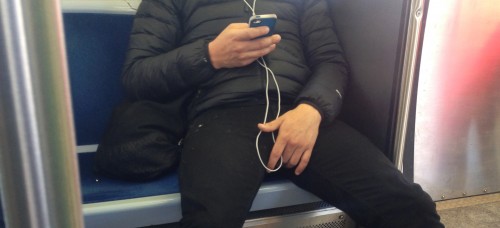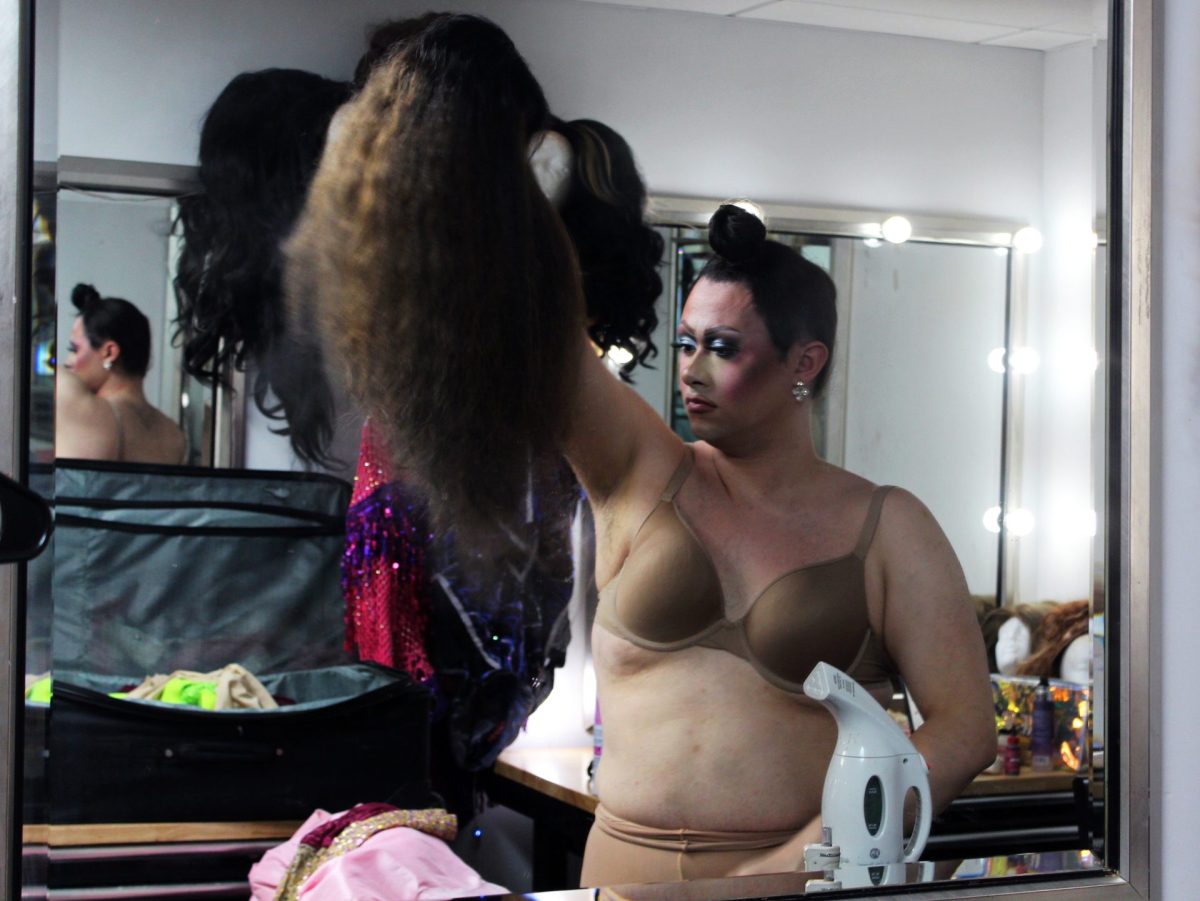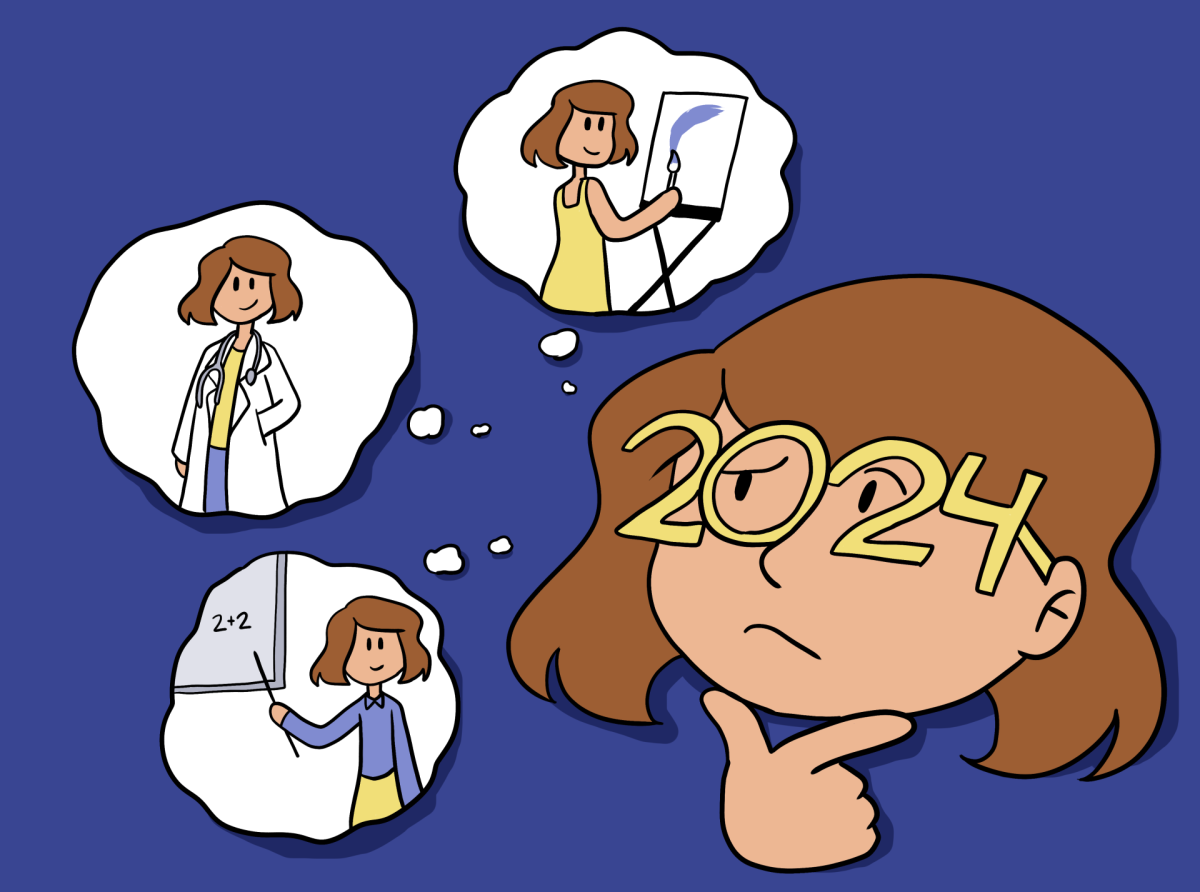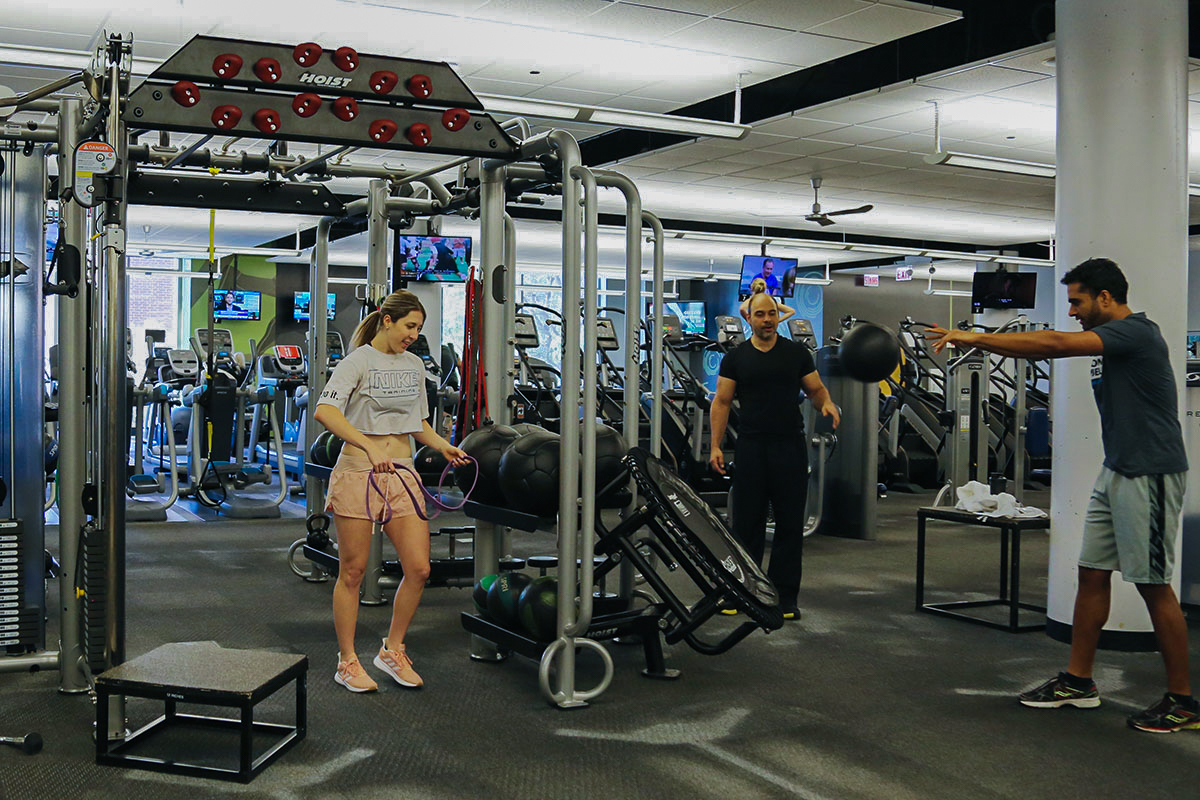
This month, the MTA in New York City rolled out a new series of placards for subway cars reminding passengers of common courtesies. One reads “Dude…stop the spread, please,” targeting manspreading.
Manspreading, or the act of a man on public transit spreading his legs widely outward, so widely that they stretch beyond his own seat, is often perceived as disrespectful, or even misogynist, as women typically aren’t seen doing it.
“It’s not cute, and I find it rude,” Kathryn Blais, a student at North Park University, said.
Even when not seen as a sexist act, most people seem to agree that it is impolite and makes riding on crowded public transit even more uncomfortable.
For Clare Healy, a student at DePaul University, manspreading isn’t a serious issue, but definitely an inconvenience. “I feel like I notice it more on the new trains, just because the seats are all together, and there’s a lot less personal space,” she said.
Healy doesn’t think men do it on purpose, but simply because it is more comfortable for them. Nassir Faulkner, also a DePaul student, agreed, and thought that most men would change their ways if they knew it was such a bother to many other CTA riders.
However, DePaul student and member of the DePaul Feminist Front, Laura Springman, said it’s part of a bigger problem of male entitlement, specifically in public spaces.
“It’s subconscious most of the time, I’m sure, but it all goes back to men controlling the public sphere,” Springman said.
Fellow member of the DePaul Feminist Front, Benjamin Shaffer, agreed.
“I think some men think they deserve more space than other people. They are mistakenly under the impression that their comfort is more important than the comfort or needs of those around them,” he said.
Blais said she didn’t immediately recognize the term “manspreading,” but Google imaged it and then immediately recognized the term, after seeing it many times on the CTA. Faulkner, from New York, said he hasn’t noticed it too much in Chicago but has many times in New York.
So, how can manspreading be stopped here in Chicago?
“I’m not sure if there are any policies the CTA could implement because there isn’t a way to stop manspreading unless a CTA worker asked someone not to. As DePaul students, we could tell our friends not to manspread and hope that they’ll tell a friend and so on,” Faulkner said.
Shaffer said he has heard of public transit in other cities using ad campaigns to call out manspreading, and said the CTA could do the same to shed some light on the issue.
“I think that DePaul students could do a lot to change the culture by being aware of how much space we take up on transit and letting people know when they’re taking up too much space,” he said.
While ad campaigns are one idea, both Springman and Shaffer agreed that CTA seats should be bigger, not just because of the issue of manspreading, but also to accommodate all body types and sizes. CTA seats have about 15 inches of blue cushion, with an extra inch on each side of the cushion, giving each person about 17 inches of space to sit without manspreading.
Unfortunately, it seems that 17 inches of space isn’t sufficient for many CTA riders.
“It’s just a little annoying to pass up a seat because there’s not enough space next to a manspreader,” Healy said. “CTA seats should be bigger.” She also added the element of Chicago weather: wearing big winter jackets makes it extra hard to squeeze into a seat, with or without a manspreader sitting in the next seat.
Blais, however, pointed out that if there were no manspreading and if citizens sat in their seats properly, there wouldn’t be much of a need for larger seats on the CTA. “As a student, if I walk onto a full train and there are people comfortably sprawled out, I’ll just say, ‘excuse me,’ and sit down,” she said. “Making a statement that it’s not an acceptable thing to do can help start to create change.”














Tyler • Jan 13, 2015 at 11:36 pm
I can not comprehend why people think this is some sort of serious social issue. It’s part of male biology to have the legs spread out when relaxing, that’s just how the bone structure is made. It’s an unconscious reaction created muscles relaxing, and you even said it yourself near the end and I quote “As a student, if I walk onto a full train and there are people comfortably sprawled out, I’ll just say, ‘excuse me,’ and sit down,”. For nearly everyone you can ask them to make a bit of space and they will, and if they don’t than they are probably an asshole that wouldn’t give you the time of day. Don’t see why this is a big deal.
Madelyn Ryder • Jan 13, 2015 at 5:16 pm
And what of the men and women on buses and trains who sit on the “aisle” seat, thus discouraging those from asking them to make room? That should be worth another 700 page article.
Cumin Flation • Jan 13, 2015 at 2:20 pm
“As a student, if I walk onto a full train and there are people comfortably sprawled out, I’ll just say, ‘excuse me,’ and sit down,” she said.
ARE YOU KIDDING ME?
You go on so far in this article how “manspreading” equals literal holocaust of women, and then at the end it’s revealed was never really a problem to begin with if you just simply ask to sit down?! And even afterwards you do on for one more sentence stating how “big” a problem it is.
This article can’t even be consistent. This is exactly like the video of a woman walking through New York City and getting “Good Morning” and “How is your day?”, and then labeling it as street harassment.
Honestly, this is why I no longer take today’s feminism seriously.